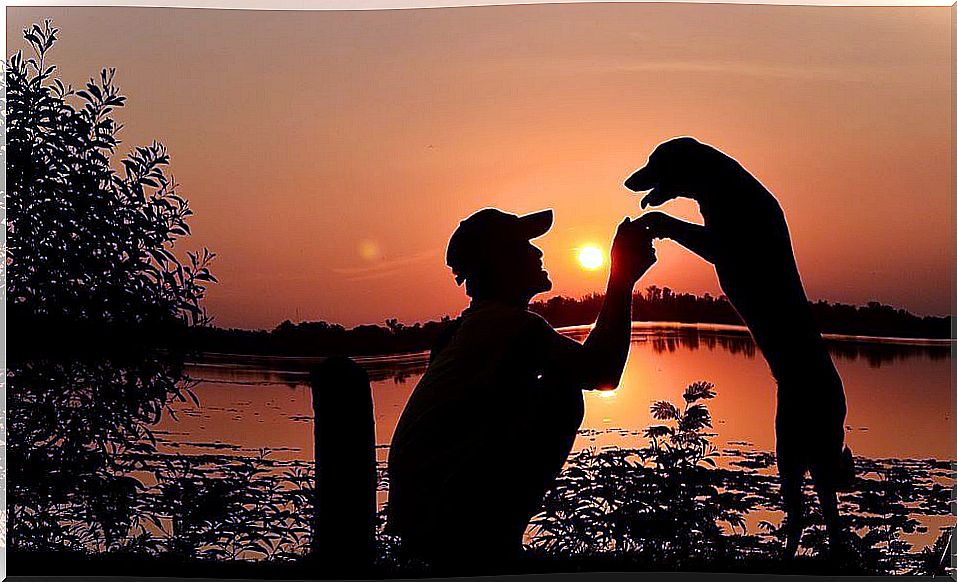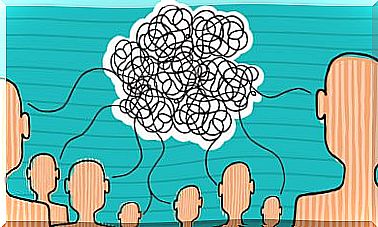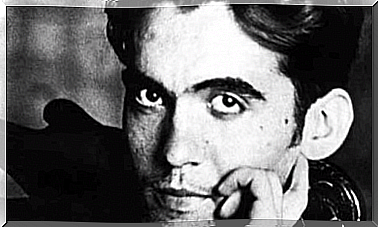Do You Know How Dogs Recognize Our Faces?

Dogs are inseparable animals that, well educated, are an inexhaustible source of companionship and love. Always ready to play, to follow you and to be with you. They are the first to feel you when you get home and usually the ones who welcome you with the greatest joy. You can leave for five minutes, and when you return, their displays of affection will be similar to what they would give you if you had spent a year away.
They are sharp with hearing and accurate with smell, however, they also have sight. A sense that does not occupy the main place for them, but that they also use and which they use especially to move. They also use it to recognize people and in this article we are going to try to determine specifically how they recognize our faces.

How do we recognize faces?
For us humans, the visual recognition of faces is a process that occurs in our brain in a fast and efficient way. In addition, it is a process that not only stands out for being very fast or for being connected with long-term memory processes, but also stands out because it is “falsely selective”. As if this were not enough, anatomically we have an area of the temporal cortex dedicated to face recognition.
What do we mean by “falsely selective”? Surely if you are not from the Japanese country, when you see a group of Japanese together it seems that their features are very similar. In fact, you feel like you could perfectly mistake one for another. Something that will happen to you with Japanese men, but also for Japanese women.
This does not happen because there is less variability between their bodies than between the people in your environment whom you can easily distinguish, it is because we are not used to differentiating their faces. The great fault of this is that for our ancestors it was not very important to know how to differentiate some Japanese from others, and -except for exceptional cases- for us neither.
Finally, before entering the canine world, we would like to point out that in human beings there is a disorder related to the difficulty of recognizing faces: prosopagnosia. A few months ago we wrote an article on the subject and if you want to consult it, you can do it here.
Several studies have been carried out on face recognition in dogs. Studying their eye movements we have been able to find out that a dog is capable of differentiating familiar faces from unknown ones, and between them those of their owners. Thanks to this type of study, we also know that the faces of other dogs attract more attention than those of strangers.
In another study, published in ‘Animal Behavior’ and based solely on the behavior of animals, researchers found that a dog pays more attention to its master when his face is uncovered than when his face is covered.
Finally, the studies that analyzed the activation of the brains of dogs by means of magnetic resonance directly implicate two areas of their brains in facial recognition:
- Earlier we said that human beings had a part of our brain that was exclusively dedicated to face recognition. Well, in a study carried out with magnetic resonance imaging, it was found that all dogs had a greater activity in this area when faces were presented to them, instead of objects.
- in dogs this area of the brain is closely related to rewards. Thus, the hypothesis of the activation of this area when faced with the presentation of faces, in dogs, is that they understand recognition as a reward.
One way or another, what there is no doubt is that dogs love the faces of the people from whom they receive affection. For example, we leave you a fun video!









